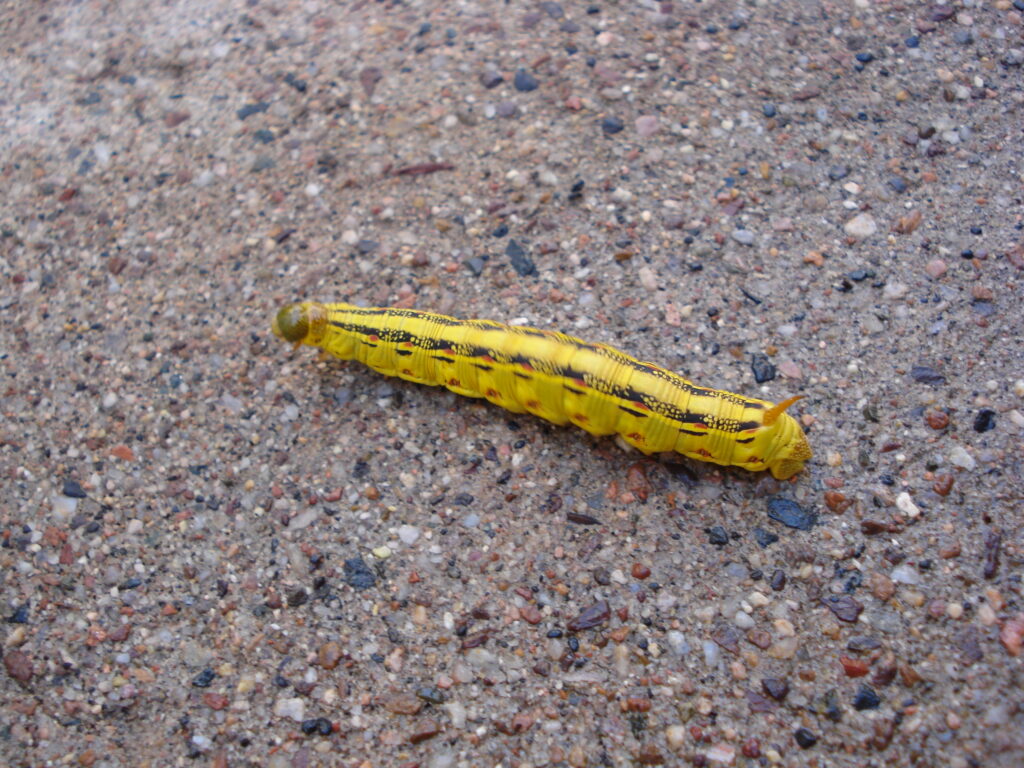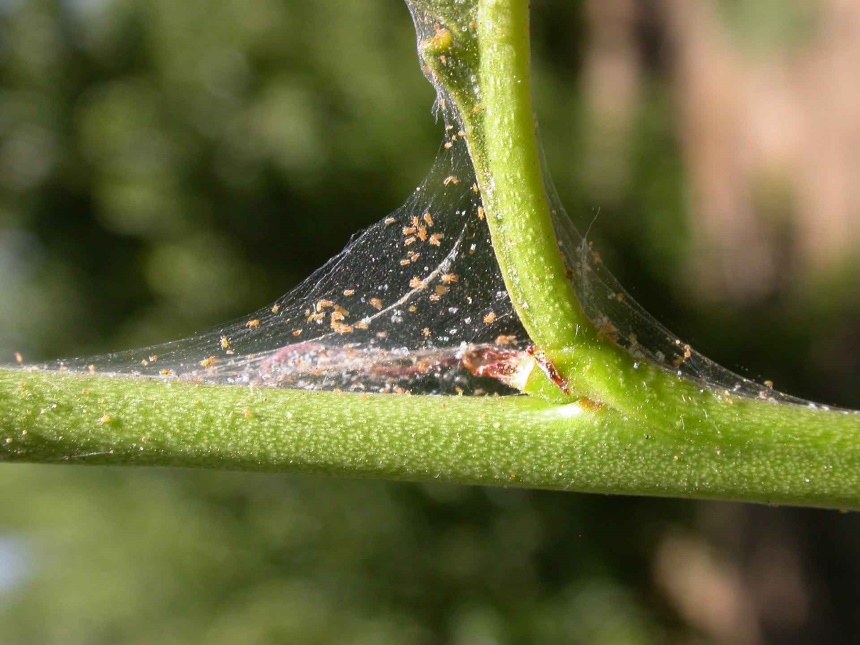

What could be more horrific than pulling down your sheets in the middle of the night and finding tiny little worm-like critters in your bed? If you have seen a few already, you are not alone. Bed worms are common worldwide and don’t cause much harm except discomfort and terror that can rob you of good night’s sleep. Many people tend to confuse bed worms with bed bugs worms.
Bed worm is a term used extensively to describe the larvae of different pests. In most cases, the larvae are usually harmless, but when they emerge as adults, they are a different story. Also, just because they are called bed worms does not mean they can only be found on beds. In this article, we will discuss what bed worms really are, the different types, their cause, how they spread, and how to get rid of them.
As mentioned before, most bed worms are the larvae of other insects, including moths and carpet beetles, and they can be found in other places other than the bed. The bed worms mostly end up in your bed to eat the beddings as they feed on natural fabric like silk and wool. Although they are frightening, bed worms are completely harmless unless you have an allergic reaction to their bite.
Here is a quick rundown of the most common types of bed worms you are likely to encounter on your bed.
These tiny white parasitic worms take the crown for creepiness. They crawl out of the anus to lay eggs and breed on the bed while you are asleep. You can identify them as white pinpricks or thin threads. According to the Centers for Disease Control and Prevention (CDC), Pinworms’ excretion is harmful and can lead to itching around the waistline or, worst cases, muscle pain from inflammation.
These are tiny moths commonly found in bed or clothing. They have long hair and come in either brown, black, or yellow tones with stripes on their body for easy camouflaging on the fabric they love to feed on. Carpet beetle larvae look alike, making it hard to tell the species apart.
Your pets can transfer fleas to your bed if you hang with them in bed. When the adult fleas drop on the bed, they will find refuge in the tiny gaps and cracks on the mattress and bed frame. If your pets don’t come around often, the fleas will bite you to feed and keep reproducing. The female adults will lay eggs from which the larvae would emerge. Although hard to spot, flea worms are also bed worms.
These love to eat fabric and can eat anything, from the old clothes stored away in your wardrobe to the upholstery on furniture. Good thing is clothes moth larvae will always leave a clear clue that they are around. The larvae are about ½ inch long and have a creamy or white body with a brown head. They leave silk webbing trails and line tunnels through your clothes with silk.
As bed worms can be the larvae of any insect or pest, the life cycle may vary. Although most insects have a life cycle with four stages, egg, larva, pupa, and adult, they bear different appearances and characteristics in the different stages.
For instance, the egg of a flea worm will not have the same appearance as the egg of a carpet beetle larva or cloth moth larvae. You can identify a bed worm’s eggs by looking for round or oval-shaped substances that appear in clusters on your sheets. In the larvae stage, you will see the worm, and in the pupa stage, you will see cocoons or dark, hard shells. In the adult stage, you should be able to look up the insect continuing its lineage in your beddings.
Bed worms can appear in your home for various reasons, including:
Most bed worms creep into beds for food. Dirt and food stains are the main diet for the majority of bed worms. If you eat and leave food crumbs and stains in your bedding, you will likely attract bed worms, especially the carpet beetle larvae and the clothes moth larvae. The larvae will chew on the stained areas in your bedding, and it can be worse if they are of high quality and made of top-notch products like silk.
The worms will be attracted to other furnishings in your house, like carpets, upholstery, and curtains, if they are dirty.
Besides dirt and food stains, dampness, especially in the kitchen and bathrooms, can cause bed worms. The larvae of kitchen pests thrive and develop in food waste, high wetness, and organic waste. These larvae can also creep into your bed if you leave food stains on your bedding. Damp bathrooms also provide a suitable environment for insect breeding. The larvae of these insects can crawl into your bed, especially if you are fond of visiting the bathroom at night.
Bed worm-causing insects can enter your house when you open the windows or doors or through any openings on the walls. You can also bring the insects yourself unknowingly. For instance, you can bring adult carpet beetles into your home with the potted plants you buy from a plant store.
Bed worms don’t necessarily originate from the bed. Most bed worms hitch a ride to your bed on your clothing or pet’s body. They can also crawl from one point to another. For instance, if there are insects developing in your damp bathroom and it is adjacent to your bedroom, the worms can easily crawl to your bed.
Bed worms are not harmful to humans. Insects are harmless in their larval stage. However, they are a frightening sight that can rob you of a good night sleep.
You will know for sure you have bed works if:
You should act immediately upon seeing these signs to prevent further spreading and an uncontrollable population.
You can get rid of bed worms with natural remedies you already have at home or are easily available in convenient stores near you. Some of the most effective remedies for countering bed worms include; the following.
You can use plant-based essential oils like peppermint or thymol to treat the fabric infested with bed worms in your home. Before using the essential oil, test it on a small hidden area to ensure it doesn’t cause discoloration.
Neem seed has an extremely powerful oil that has been used in India and other parts of the world to control mosquitoes and bed bugs for many centuries. You can spray some neem seed oil on your bedding and furniture to control bed worms. It works by impeding the bed worm’s growth and ability to lay eggs.
According to a definition by WebMd, Diatomaceous earth is a powder made with the fossilized remains of algae, and it works effectively in getting rid of bed worms. It kills bed worms by absorbing all the oils and fats from its exoskeleton and dehydrating them to death.
Get food-grade Diatomaceous earth and dust it around the bed, on your bedding, furniture surfaces, and cracks and crevices if there are any. You can also add some of it to vacuum cleaner bags to kill bed worms when cleaning.
If you need Diatomaceous earth, try the HARRIS Diatomaceous earth. It is one of the most popular food grade DT brands in the market because it is 100% natural, and it offers excellent value for money. The DT has no chemical additives or fillers and comes with a powder duster for easy and efficient application.
If you have little faith or patience for natural remedies, you can go the chemical way. With the chemical option, you will be spoilt for choice as there is an extensive range of chemical products to choose from. Go with a pesticide made specifically for killing bed worms and their eggs. Here are a few examples:
The National Pesticide Information Center defines Pyrethrins as pesticides derived from Chrysanthemum flowers on their fact sheet. Their natural compounds are used to make insecticides that can kill various insects including bed worms. Most pyrethrin-based insecticides are safe to use around children and pets.
The insecticides come in concentrated liquid or aerosol form. Either option would work well for managing bed worms in your home.
These are insecticides that work by paralyzing insects’ nervous system. Most of them are fast acting with long-lasting residual control and can kill insects in all their development stages, including eggs, larvae, pupa, and adults. You can get one that comes in a ready-to-use aerosol form and doesn’t leave residue to spray on your bedding and furniture infested with bed worms.
Permethrin is a synthetic insecticide that kills insects by paralyzing their nervous system just like Neonicotinoids. You can use it on bedding, furniture, carpets to kill bed worms and in the outdoors to control other pesky insects like fleas and ticks.
After establishing that you have a bed worm issue, you need to act quickly to prevent further spreading and damage on your clothing items. According to a Science research paper about the life cycle of insects, the larval stage causes the most damage as most insects develop chewing mouthparts at this stage.
Here is a step-by-step guideline on what to do to get rid of the worms completely:
As mentioned before, bed worms thrive in dirty and cluttered spaces that offer adequate hiding. Before doing anything, remove all the unnecessary clutter in your home. Part with clothes, shoes and other belongings that you don’t need. After decluttering, clean your storage spaces like cabinets, closets and drawers.
The first thing to do is remove your bed sheets or bed cover from your bed then throw them in the washer and dry them at high heat in the dryer. You can also air dry under direct sunlight. Bed worms cannot withstand high temperatures, therefore the more you subject your infested bedding to high temperatures, the higher the chances of killing all the bed worms. Ensure you wash and dry all the soft items you have around your bed like pillows, rugs, and pet beds.
You can seek the help of professional cleaners to help you get rid of bed worms. Their large commercial-grade equipment is likely to clear most of the bed worms.
Regular vacuuming is an essential exercise when ridding your home of bed worms. Vacuum your bed’s surroundings thoroughly, from the floor to the ceiling to get any food crumbs or stains out of the way. Move all your furniture and vacuum all the spaces to ensure you leave nothing that attracts bed worms. When done, clean all the hard surfaces with a damp cloth.
You can invest is Bissel cleaners which work by directing hot water into the deep unreachable areas of the bed and other furniture to suck out all the bed worms and other insects. The cleaners also suck other things like debris and dirt. Once you are done cleaning, invest in a high-quality waterproof mattress cover that will allow you to clean the mattress easily with a regular vacuum cleaner or warm, damp cloth. What’s more, it will prevent tiny critters from entering your mattress next time.
Insects live and lay eggs in tiny cracks and holes. Get a thin pesticide spray that can penetrate the tight hideouts and spray all of them down. Spray the headboard, baseboard, bed frames and all the cracks on the bed. If you need a spray and have no idea what or where to get one, consider the popular Reefer-Galler SLA Cedar Scented Spray. It can kill the eggs, larvae and adult clothes moths and carpet beetles. It is also a fantastic repellent spray against other pests like flies, roaches, moths and mosquitoes. Its fresh cedar scent will leave your space freshened up.
You can also mix essential oils like peppermint and cedarwood if you can’t access a pesticide spray. The mixture would be just as effective and won’t damage your wall or furniture surfaces. Plus, you will enjoy the sweet scent the essential oils have.
After treating the cracks and crevices, seal them to prevent future infestations. Fill the spaces around the doors, window frames, headboard and baseboard with spray foam insulation. You can also use mastic caulking to fill the cracks around your bed.
As mentioned before, carpet beetle larvae and clothes moth larvae thrive on certain types of fabric including, fur, leather, and wool. If you are seeing them creeping on your bed, it is highly likely they are in your closet as well. Remove all of your clothes and dry clean them. Dry cleaning will expose the worms to high temperatures and kill them immediately.
Ensure you vacuum your closets and drawers or wherever you store your clothes before arranging them after dry cleaning. Otherwise, they would get re-infested by the few bed worms still hiding in the corners and cracks.
Pets are good carriers of almost all kinds of bugs. Once you have cleaned your house thoroughly, give them a good bath with a good shampoo that can kill all the bugs on them. Clean their bedding in high heat as well and aerate them. Invest in several pet bedding so you can change them regularly for cleaning.
To get rid of all the bed worms in your home you have to thoroughly clean or eliminate all the items harboring them like clothes, bedding, furniture, and mattresses. If there are infested items that you cannot clean or treat to remove all the bed worms, you have no choice but to do away with them.
After eliminating all the host infestation and all the external threats, ensure you clean regularly, wash your bedding at least once a week, and close the windows at night to minimize the risk of another infestation.
If you follow all the steps above and you still see signs of bed worms, you can call for help from a pest control professional. They will do a thorough inspection and if they find any bed worms, will eliminate them professionally. You will also benefit from their tips on preventing a future infestation.
Although insect larvae are harmless, you can’t be too sure about what the bed worms in your bed will grow into. They may grow into insects that can pose serious threats to your home and your well-being. Therefore, if you have just cleared an infestation you should work to prevent the risk of a future one occurring.
Ensure you vacuum your bedroom and entire house as often as possible to remove dirt and any food crumbs or stain that could attract bed worms. You can invest in a handheld mattress vacuum to suck out all the dirt and micro-organisms from your mattress.
Remove your bed sheets and bed cover at least once a week for cleaning. Clothes moth larvae and carpet beetle larvae love to feed wools and linens. Washing your beddings in hot water and dry cleaning your clothes can keep bed worms at bay significantly.
Sealing all the openings through which insects causing bed worms can enter is crucial. Make a habit of closing the windows at night to prevent creepy bugs from entering.
A dump kitchen or bathroom is one of the main causes of bed worms. Ensure your bathroom floor is dry after showering and make a point of cleaning it with a disinfectant routinely to prevent the development of bugs. As for your kitchen, keep it clean and take out the trash routinely.
An air conditioner will regulate the temperatures in your home and keep away insects during warm and dry seasons. According to an article by K-State Research and Extension, flying insects hate cold temperatures. Therefore, you can set your AC low when you leave the house during the day to keep the insects away. An insect repellent will do the same. If all insects are outside, nothing would be laying eggs that hatch into larvae/worms in your bed.
Except for their frightening sight, bed worms are not the worst thing that can happen to you. They are entirely harmless but can take away your sleep. For this reason, you should know how to get rid of bed worms immediately after establishing signs of an infestation. We have covered everything, from causes to prevention and pro tips for exterminating the tiny but frightening invaders.
If you are too creeped out to handle the situation, get help from professional cleaners and pest control services. They will do an examination and get rid of all the pests properly. Otherwise, all the natural and chemical remedies we have provided are effective against bed worms. Remember to keep your space clean and sealed from flying and crawling insects that could lay eggs in your bed.





